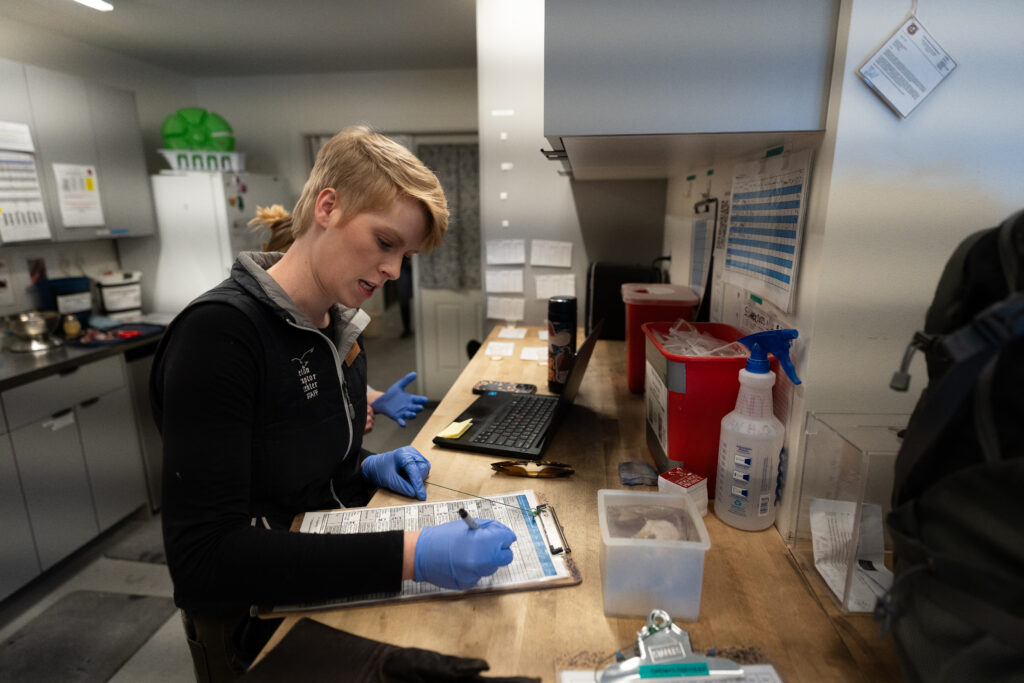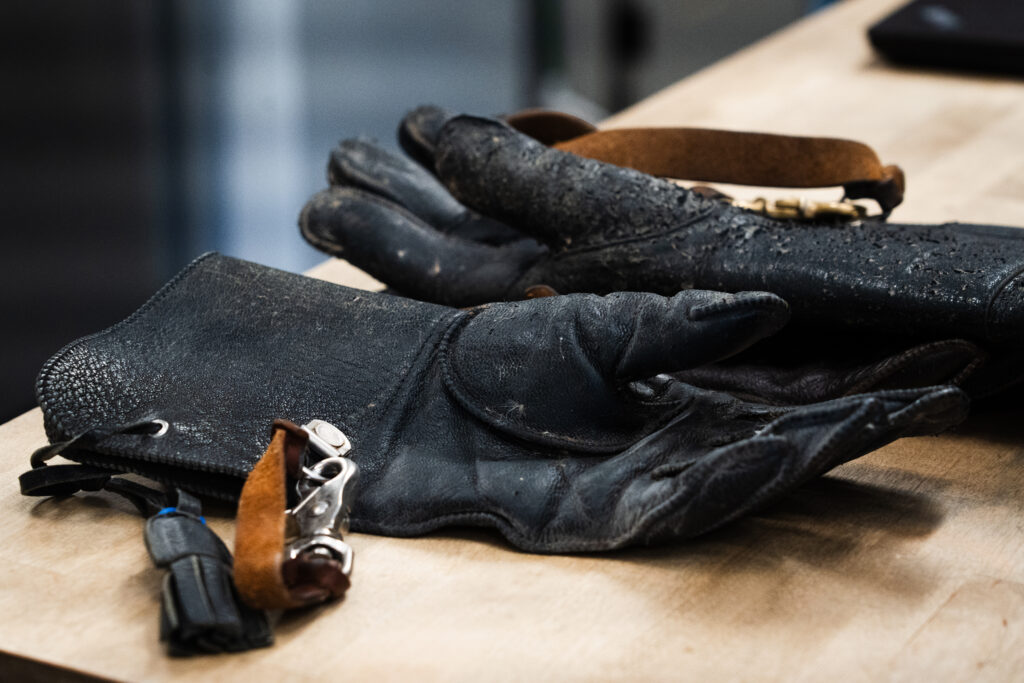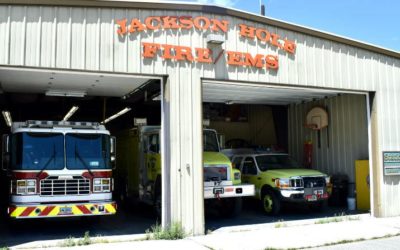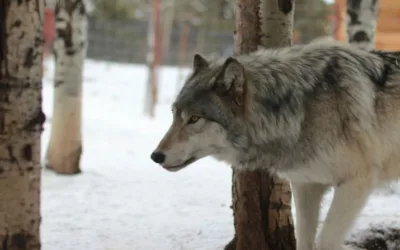Workers in Jackson Hole face unique challenges to power the community. The beauty, wild nature and outdoor access the region offers are some of the great perks of life here. But servers, educators, nurses, home builders and more often have to deal with the high cost of living, learning new languages for their jobs, and, for some, long commutes.
In KHOL’s new Workers series, we get to know more about some of the folks that help our community thrive and what drives them to stay here.
Protecting these avian predators from speeding cars and even picking them up if they are injured is an unspoken part of her job at the Teton Raptor Center (TRC), where Tobin works as a senior trainer and education coordinator.
“I keep an eye out for raptors as I’m driving, because a lot of raptors do get hit by cars on the pass. So I’m always scanning for that,” said Tobin.
Tobin also uses her daily commute from Victor, Idaho to plan the busy workday ahead of her. Before she finally glides into a parking spot at the TRC’s campus in Wilson, Tobin has already laid out feeding schedules, education programs, and the training and care she will need to administer to the TRC’s avian ambassadors, a small flock of raptors. Tobin uses them to educate the public on the Greater Yellowstone Ecosystem’s native birds of prey.
“While I’m on the pass, I’m often thinking about the upcoming programs … I’m thinking about the birds themselves and what’s going on in their lives,” said Tobin. “Maybe I think about the enrichment they could be getting, and how I could improve their day-to-day lives.”

Anna Tobin schedules training and feeding times, along with recording basic health data about the raptors. (Kieran Hadley/KHOL)
Training raptors: a choice-based approach
Tobin’s job at the TRC is multifaceted, demanding equal parts scientific expertise, social skill and the ability to create intricate relationships with a species of highly perceptive predators. The only constant is that the TRC’s resident raptors need care and training every day.
“We come in every morning and do morning care. And then we are training our ambassadors — every bird gets trained every single day,” Tobin explained. “I’m also creating training plans, tracking diets and creating new education programs.”
The majority of Tobin’s day is spent with the TRC’s avian ambassadors — those resident raptors who, for one reason or another, are unfit to be released into the wild. Instead, they serve their fellow raptors out in nature (and the TRC) by educating the public on the various birds of prey and the threats they face.
Tobin works with the ambassadors every day, training them to be more comfortable around people during those programs. During these programs, Tobin and other TRC staff introduce the raptors to visitors, allowing people to observe them up close.
“Being a raptor in an education program is like if we [humans] were to be surrounded by bears. It’s very against their nature. It can potentially be very stressful,” said Tobin. “And so we develop a trust-based relationship with these guys. They don’t like us or have the ability to like us, but they can trust that we’re reliable food sources. We keep them safe.”
In training the ambassadors, the TRC uses an entirely choice-based approach, Tobin said, meaning that the raptors are never forced to do anything that might make them stressed or uncomfortable.
“All of [the ambassadors’] gear is completely removable, so they actually have to choose to step onto our glove to put their gear on, to go off site and do these different things,” Tobin said. “So if a bird doesn’t trust us, if they don’t want to program, we don’t force them to. We’re not in the business of forcing birds for education. That’s like the antithesis of what conservation is supposed to be.”
Tobin demonstrated this practice with Cosmo, the TRC’s barn owl, as she trained him to enter into the box which staff use to transport him to educational programs. Once the box opened, Cosmo enthusiastically hopped in, and was promptly rewarded with a morsel of rodent flesh.
“There’s a certain level of, like a toddler, that when they experience something new, it’s scary to them at first. And that’s what we try to slowly adapt them to,” said Tobin. “And if a bird doesn’t adapt to something, we don’t again force them to do it.”
Raptors need intensive care
Training and caring for Cosmo and his fellow ambassadors is a demanding job, requiring technical competence as well as a willingness to work long hours. In order to work so closely with the raptors, Tobin studied to become a professionally certified bird trainer, and is one of less than 200 people worldwide with that qualification, she said.
The birds also require year-round intensive care and training. Staff must prepare their meals and administer vaccinations and other medical services, in addition to training them for programs.
“You have to do 365 days of care … It’s a big job in an industry [known for] burnout. You don’t really get holidays, you don’t get normal days off,” Tobin said.
“And so it can be a high burnout industry because you’re also trying to convince the world that, not only does the greater conservation matter, but also the individual welfare of the animals.” – Anna Tobin, Teton Raptor Center
On top of that, the high cost of living in Jackson puts extra fatigue and stress on employees, especially those like Tobin who have to commute daily over Teton Pass.
“I’ve woken up so many times when there’s heavy snow and had to just keep track of whiteout constantly and try to wait for the pass to open or see if it’s going to close and whether we can get over,” Tobin said. “And so it’s just kind of a low-level stress constantly, working through that.”

A pair of birding gloves. The equipment that the Teton Raptor Center trainers use is completely removable to ensure that the raptors don’t have to participate if they don’t want to. (Kieran Hadley/KHOL)
Despite the logistical challenges of living in the Tetons, Tobin said her passion for working with wildlife and with raptors in particular makes it worthwhile.
“I didn’t move to Jackson for Jackson. I moved to Jackson for my job,” Tobin said. “I love training people and I love training animals. It’s like creating a common language and telling a story.”
Education as conservation
By providing visitors with safe, close encounters with raptors, Tobin and her staff hope to help empower local residents to do their part in protecting these species.
Among the threats that Teton County’s raptors face are car collisions, sickness from lead-based ammunition, and, more recently, HPAI, or the newest strain of avian flu which is devastating various mammal and bird species across the globe.
“HPAI is the bird flu that is carried by waterfowl and flocking birds,” said Tobin. “And so if a bird has it, they’re dead within 48 hours. And we actually lost two avian ambassadors – two kestrels – to it.”
As HPAI outbreaks have ramped up nationwide in the last year, the TRC has had to implement new protocols and increased vigilance to ensure that their raptors don’t contract the virus.
“Any bird that comes into rehab, we have to screen them first for HPAI, and often make a really tough call to euthanize proactively if we suspect them for it,” said Tobin.

Anna Tobin shows a bone to her colleague as she prepares a real for the raptors. They are fed a diet of small birds, rodents and lizards. (Kieran Hadley/KHOL)
The best way to help protect raptors from the various threats they face, Tobin said, is the type of education and conservation work done by organizations like the TRC.
“Most people don’t realize the world class conservation center that is in their backyard. I would love it if more people could learn about it and get excited about it,” said Tobin. “But the other thing I want people to know is that living with wildlife just takes some small adjustments. We can, as a public, as a society, we can live our lives in a way that respects their wildness as well.”







